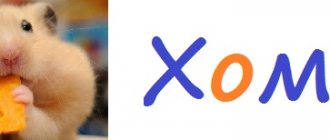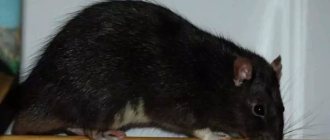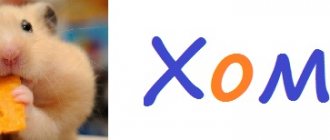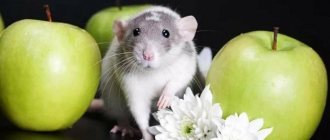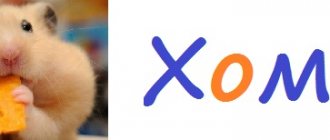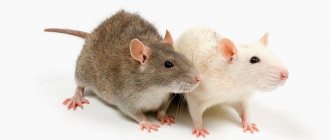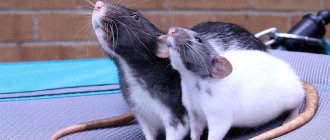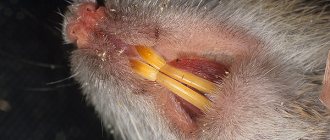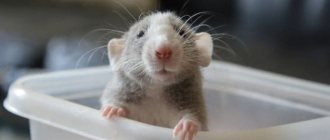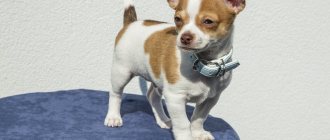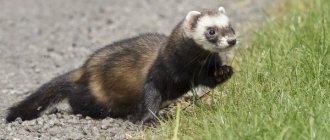There are a large number of colors and they are all divided into: Self, Ticked, Silvered, Pointed and Marked colors.
Quick navigation
Uniform colors: Black, Blue, Russian Blue, Powder Blue, Mink, Mock Mink, American Mink, Platinum, Beige, Albino, Champagne, Russian Silver/Russian Silver, Russian Dove/Dove, Chocolate/Chocolate, Russian Beige/Russian Beige, Caramel, Lilac/Lilac.
Ticked colors: Agouti, Blue Agouti, Platinum Agouti, Amber, Cinnamon, Fawn, Topaz, Pearl, Cinnamon pearl, Platinum Pearl blue.
Silver colors: Silvered Black, Silvered Blue, Silvered Mink.
Combined colors: Seal Point Siamese / Siamese, Black Eyed Siamese / Siamese with black eyes, Blue Point Siamese / Siamese blue, Russian Blue Point Siamese / Siamese Russian blue, Golden Siamese, Himalayan / Himalayan, Black Eyed Himalayan / Black-eyed Himalayan, Burmese / Burmese/Burmese, Sable Burmese/Sable Burmese/Sable, Wheaten Burmese/Wheat Burmese.
Marked colors: go to the description of markings.
Uniform (self) colors
Uniform colors are characterized by the fact that all hairs have the same color and tone.
Black
Author: runa
Smooth, rich coal-black color, without inclusions of other colors or ashy tint. The hair is black from root to tip, the undercoat is as dark as possible. The eyes are black.
Genetics: aa
—
Blue
Author Kulikova N.
An even gray color with as strong a blue tint as possible. From steel blue (English or British Blue) to very light bluish blue (Slate Blue). The hair is dyed along the entire length. The eyes are black.
Genetics: aa ggaa
Russian Blue
Author Elizaveta Milanovich
A very dark grey-blue color with a metallic sheen; due to the fact that the pigment is concentrated in the spine of the hair, there is a slight effect of unevenness and ticking of the color, but this is not a disadvantage of the color. The hair is colored along the entire length to the base, the undercoat is dark blue. The color of the paws corresponds to the color as a whole. The belly is gray-silver-blue. The eyes are black. In general, this color resembles that of Russian Blue cats.
Genetics: aa dd
Powder Blue/Smoky blue
Light dove-blue color. The base of the hair and undercoat are light silver in color. The eyes are black (or dark ruby).
Genetics: aa gg (based on bleached undercoat)
Mink
Author Kulikova N.
Smooth brown-gray color with a bluish tint. The hair is dyed along the entire length. Eyes black or dark ruby.
Genetics: aa mm
Mock Mink/American mink
Author Kulikova N.
Warm rich brown color. The eyes are dark ruby, in harmony with the color of the coat as a whole.
Genetics: aa mm Rr or aa momo (where mo is an American mink) - a modification of the mink color
Platinum/Platinum
Photo by Listik
The color is light gray with an icy blue tint. There should be no cream, brown or strong blue tints. The hair is dyed along the entire length. Eye color varies from light ruby to almost black. A bright ruby eye color is preferred, but should not be too light.
Genetics: aa gg momo (where mo is an American mink, i.e. mock mink)
Beige/Buff/Beige
Warm color of slightly tanned skin (to warm magnolia for buff). The color should not be dull, excessively yellow or gray. The hair is dyed along the entire length, to the base. Eye color is ruby to black, the darkest possible eye color is preferred.
Genetics: aa rr
Albino/Pink Eyed White/Albino/White with red eyes
Author: runa
Pure, bright, brilliant white color. The hair should be snow-white along its entire length. The color of the belly and fur on the paws is white. The eyes are bright, light red (pink).
Genetics: CC or a combination of several lightening genes (for example, Siamese + red-eyed...).
Champagne/Cream/Champagne
Very light, slightly pinkish beige color. Shouldn't be too yellow or too grey. The hair is colored evenly along its entire length. The eyes are pink.
Genetics: aa pp
Russian Silver/Russian silver
Katerina Vantala
The main color is a delicate gray-blue with a slight purple tint. The fuzzy light ripples or subtle pseudoticking common to all Russian Blue-based colors is the norm for this variety. The hair is colored unevenly, the pigment is concentrated in the upper part. The color of the undercoat is as dull as possible. The presence of brown, yellow or pinkish tints is a disadvantage. Eye color – black.
Genetics: aa dd gg
Russian Dove/Dove (Not standardized)
Photo by Listik
The main color is warm, pinkish-gray. The fuzzy light ripples or subtle pseudoticking common to all Russian Blue-based colors is the norm for this variety. The hair is not uniformly colored, the pigment is concentrated in the upper part. The color should be significantly different from platinum (Platinum) or lilac (Lilac). The color of the belly corresponds to the color as a whole, the color of the undercoat is dull gray to the base. Eye color – black or dark ruby.
Genetics: aa dd mm
Chocolate/Chocolate (Not standardized)
Author: runa
Genetics: aabb
—
Russian Beige/Russian beige (Not standardized)
Author alisa_v_strane
Genetics: aaddrr
Caramel (Not standardized)
Photo by Listik
At the moment there is no description of the color.
Genetics: aabbrr
—
Lilac/Lilac/Blue Chocolate (Not standardized)
Author: runa
Dove gray mixed with brown. Eyes dark ruby or black.
Genetics: aa bb gg — — — — — — — — —
—
Ticked colors
Ticking is the uneven coloring of hairs, that is, there are zones on the hair that are colored different colors. Among the zonally colored hairs, uniform guard hairs are evenly interspersed.
The most native and natural color for rats is “agouti” - just ticked.
Agouti/Agouti
Author Svetlana Levachova
Rich chestnut color, guard hairs are black. Short and medium-length hairs should have a yellow-orange (preferably as warm a shade as possible) band. The base of the hair is dark gray. The tips of the hairs are black. The belly is silver-gray. The eyes are black.
Genetics: A-, no mutations
Blue Agouti/Opal/Blue Agouti
Author: runa
Each hair is gray-blue at the base, with a reddish-brown band at the top of the hair. The guard hairs are light blue in color. The color of the paws matches the color as a whole. The belly is light gray-blue interspersed with silvery hairs. Eye color - black.
Genetics: A/- gg
Platinum Agouti/Platinum Agouti
A vibrant mix of light gray and cream with an even icy blue tint. The base of the hair is light blue. Each hair is marked with a cream belt. The belly color is light silver. Paw color is light gray. Eyes from light to dark ruby.
Genetics: Aa gg momo (mo - American mink, i.e. Mock Mink)
Amber
Author shumel_ka_mysh
Light yellow-orange color, each hair is marked with a silver-beige belt (ivory color). The guard hairs are silvery. The undercoat color is cream. The belly color is light beige. Eyes are pink. Preference is given to rats with the lightest eyes.
Genetics: A- pp (pink eye agouti)
Cinnamon/Cinnamon
Author Elena Masenkova
The main color is reddish-brown interspersed with chocolate guard hairs. Short and medium-length hairs are marked with a bright golden-red belt. The base of the hair is medium intensity gray-brown. The color of the paws matches the color as a whole. The belly color is silver-gray, like the agouti, but in a lighter variation. Eyes black or dark ruby.
Genetics: A/- mm (Mink Agouti)
Fawn/Dark Topaz/Orange/Fawn
Author Kalabina Vilia
Rich golden brownish-orange color, as bright as possible, with uniform inclusions of silver guard hairs. The ticking is weakly expressed, of the same red-golden hue. The undercoat and base of the hair are light gray or bluish in color down to the base. The belly is creamy silver. The color of the back and sides should be uniform. The boundary between the color of the back/sides and belly should be clear. The base color should not appear dusty or greyish. The eyes are dark ruby, the darkest possible eye color is preferred.
Genetics: A/- rr
Topaz/Topaz
Author Olga Morozova
A color similar to the fawn color, but less intense and with a lighter, duller undercoat.
Genetics: A- rr + other lightening genes
Pearl/Pearl
Author Elizaveta Milanovich
Very light silver color, transitioning to a creamy base color. The tip of each hair is lightly marked with light gray. Gray can be a warm shade and sometimes even closer to lilac in tone. The belly color is light creamy silver. Eye color - black (or dark ruby, depending on modifications).
Genetics: aa mm Pepe (dominant) or aa momo pepe (where mo is American mink; it is likely that the pearl gene behaves as a recessive gene in combination with American mink).
—
Cinnamon pearl/Pearl cinnamon
Author: runa
The coat color is based on a combination of three colors (from the base of the hair upward): cream, bluish-gray and orange. The guard hairs are silvery. General impression of color: golden with a silver tint. The belly color is light silver-gray. The color of the paws matches the color as a whole. The eyes are black (or dark ruby depending on modifications).
Genetics: AA mm Pepe or Aa momo pepe
—
Platinum Pearl/Pearl Blue
Author Kulikova N.
Light creamy gray color with a blue tint. The tip of each hair is marked blue-gray. Gray can be a warm shade and even sometimes closer in tone to lilac. The gray-blue color of the upper part of the hairs transitions to the cream color of the base of the hair and undercoat. The belly is creamy bluish-gray. The eyes are black (or dark ruby, depending on modifications).
Genetics: aa mm gg Pepe (dominant) or aa momo gg pepe (where mo is American mink; it is likely that the pearl gene behaves as a recessive gene in combination with American mink).
What does a decorative rat look like: coat type
In addition to the standard gray rats with short shiny fur, there are unusual species of decorative rodents:
- Rex. These animals' fur is quite rough to the touch, curly and sticks out in different directions. Their distinctive feature is also their curled mustache and bushy tail.
- Velveteen. This type of rat has fairly soft fur, which lies in waves, but often looks disheveled.
- Fuzz. The body of these rodents is covered with white-gray down, which becomes longer and thicker on the face and stomach. Guard hairs are absent.
- Sphinx. The pink folded skin of the rat is devoid of fur. Individual fine hairs may be found on the abdomen and head.
- Double Rex. These rodents have hairless areas alternating with areas covered with hair.
There are also quite a lot of varieties of decorative rats that are not recognized by the international classification. But it is fair to note that this does not make them any less beloved by their owners.
Silvered colors
Silver can be any of the recognized colors, both solid and ticked. A distinctive feature of the colors of this section is the alternation of silver and colored hairs in equal quantities. Each silver hair should be as white as possible, although a colored tip is acceptable. Silver colors should give an overall impression of sparkle and shine. If there are a few white hairs interspersed, the color is not considered silver. The silveriness must be clearly expressed so that the silver color cannot be confused with pearl (Pearl) or any homogeneous (Self).
The belly color of silver agoutis and cinnamons should be judged according to the standard of homogeneous agoutis and cinnamons, but in a lighter variation. The belly color of other silver varieties should be consistent with the color as a whole.
Silvered Black
Dark charcoal color, as black as possible, with even interspersed silver hairs throughout the body. The eyes are black.
Silvered Blue
Gray-blue color with silvery-white hairs evenly distributed throughout the body. The undercoat is light bluish to almost white (as light an undercoat as possible is preferred). The eyes are black.
Silvered Mink
Smooth gray-brown color with a blue tint. The number of silvery and non-silvery hairs is equal. Each silver hair should be as white (or creamy silver-white) as possible, although a colored tip is acceptable. The eyes are black.
What does a decorative rat look like - varieties
Rats first began to be seen as ornamental animals in Great Britain in the second half of the 19th century. This happened after the royal rat catcher Jack Black began catching rodents of various colors and crossing them with each other.
Courtiers and Queen Victoria herself kept these creatures in gilded cages as pets. However, the first standards for various types of rats were developed in 1901; official organizations of rodent lovers appeared only in 1976 in Europe, and 2 years later in the USA.
Currently, these animals occupy an honorable place in the line of pets along with other pets.
Find out in detail - “How to keep decorative rats at home.”
Those who decide to get a decorative rat for the first time are often surprised by the variety of colors and types of rodents. Most owners make their choice based on individual visual preferences. But those who are going to engage in breeding or take part in exhibitions should know exactly what rats of certain varieties look like. In this case, it is necessary to take into account certain requirements for body build, length and color of coat, configuration and location of ears, and other parameters.
The classification of rodents is based on body type and coat characteristics. Certain species of rats got their names by analogy with dogs and cats (sphynxes, huskies, double rexes and others).
Particular attention is paid to the shape of the ears and the presence of the tail, which in many cases determine the species.
Combined (Pointed) colors
These include colors consisting of a combination of two or more colors (except white) distributed over the body in accordance with the standard.
This section includes: Siamese colors (Shaded) - Himalayans, Siamese, Burmese, as well as merle color variations (Merle).
Seal Point Siamese
The main color is beige, gradually darkening on the rump in the direction from the loin to the tail and from the belly to the upper back; The darkest color is at the base of the tail. The tail is colored along its entire length. Darkly colored brown markings are also on the muzzle (up to eye level or slightly more), ears, front and hind legs (up to the elbow and ankles). There should be no sharp boundaries between the colored areas and the beige color of the body. There should be no white or very light areas on the body, legs or tail. The eyes are red to light ruby.
Genetics: c(h)c(h)
Black Eyed Siamese/Siamese with black eyes
author unknown
A variety of color variations are possible, just like the Siamese with red and ruby eyes. The color distribution follows the same pattern. Eye color is black.
Genetics: Be- c(h)c(h) (two copies of the Himalayan gene plus one copy of the black eye gene)
—
Blue Point Siamese
Author Kulikova N.
The main color is silver-beige, gradually and evenly darkening on the rump. The darkest rich blue color is at the base of the tail. The tail is colored along its entire length. On the muzzle the darkening goes towards the nose. Dark blue markings should also be present on the ears, front and hind legs. There should be no sharp boundaries between the areas painted in rich blue and the silver-beige color of the body. There should be no white or very light areas on the body, paws or tail. The eyes are ruby to dark, almost black.
Genetics: c(h)c(h)gg
Russian Blue Point Siamese
Author Anna Rudakova (tigra)
The main color is beige, gradually and evenly darkening on the rump; The darkest brown color is at the base of the tail. The tail is colored along its entire length. Darkly colored markings of a rich brown color should also be on the muzzle (to eye level or slightly more), ears, front and hind legs (to the elbow and ankles). There should be no sharp boundaries between dark-colored areas and beige body color. There should be no white or very light areas on the body, legs or tail. The belly is light beige. The eyes are red to light ruby or black.
Genetics: c(h)c(h)dd
Golden Siamese
Author Budnikova Elena
There is no information at the moment.
Himalayan/Himalayan
Author: runa
The main color is white, without shades of other colors or spots, uniform throughout, with markings of a rich dark brown color. The eyes are red. Painted areas: nose - the mark does not rise above the eyes; ears - the coloring does not extend beyond the boundaries of the ears and does not extend onto the head; the front legs are colored no higher than the elbows; hind legs - coloring does not extend beyond the ankles; the tail is colored along its entire length, the mark does not extend beyond the base of the tail; feet - solid color over the entire surface, without white.
Genetics: cc(h)
Black Eyed Himalayan
Author: dambik
The main color is white with beige markings on the nose, paws and base of the tail. The beige “darkening” does not extend on the face above the eyes, beyond the elbows on the front legs and beyond the ankles on the hind legs. The ears and tail are lightly pigmented. Eyes black
Genetics: presumably c(h)c + black eye gene (BE)
—
Burmese/Burmese/Burmese
Photo by Listik
The main color is a uniform deep brown, without an ashy tint, silvering, interspersed with other colors, with darker points of the same shade. There should be a pronounced contrast between the color of the body and points. The eyes are black.
Genetics: aa c(h)c(h) Bubu, aa cc(h) Bubu
—
Sable Burmese/Sable Burmese/Sable
Author VaKa
Body color is a warm, rich dark brown (otter color) with slightly darker markings (points) on the paws, ears, muzzle, and tail. There should be no dusty tint, silvering, inclusions of other colors or spots. The contrast between the color of the points and the body should not be too strong. The black color in the point color is a fault. The eyes are black.
Genetics: aa c(h)c(h) BuBu, aa cc(h) BuBu
WheatenBurmese/Agouti Burmese/Wheat Burmese
Author: dambik
The body color is sandy, the points should be significantly darker than the main color. The base of the hair is light brown. Short and medium-length hairs have a yellow belt. The belly color is light silver-gray. The eyes are black.
Genetics: A- c(h)c(h) Bubu, A- cc(h) Bubu
— — — — — — —

